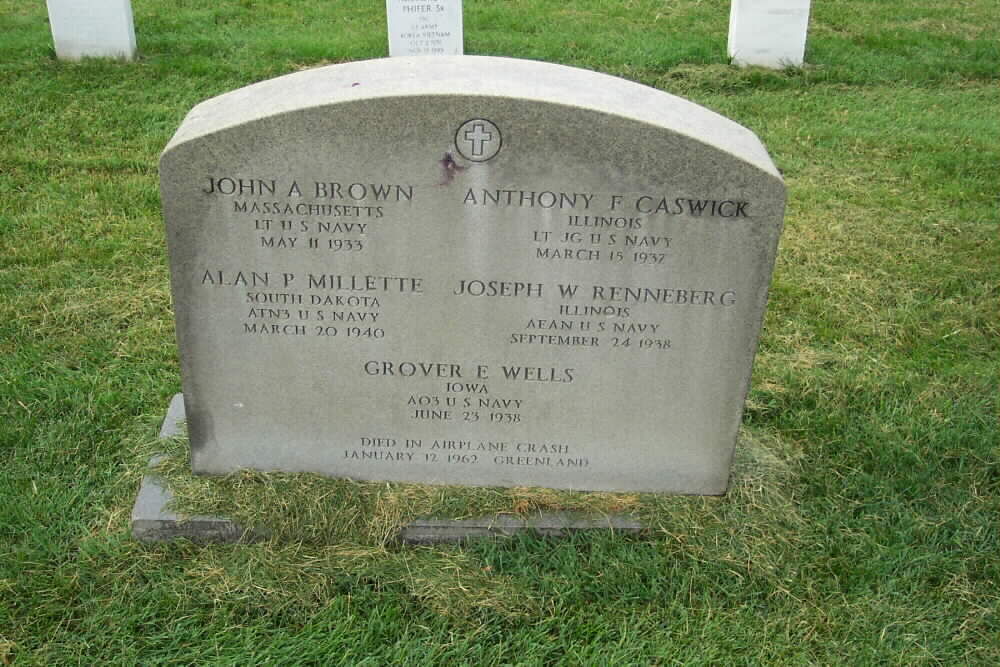Last November, Inside the Beltway called attention to the remains of up to five U.S. Navy airmen still sitting above ground in Greenland, where they perished in 1962 while hunting for Russian submarines. “They are not under ice, but visible every summer when the snow melts,” said retired naval officer George G. Fabik of Allentown, Pennsylvania. “They were last seen in 2001. This has to be considered a national disgrace. They did die in the service of their country.”
Now, 42 years later, a military and civilian team of 16 men departed Norfolk yesterday in hopes of recovering the remains.
Bob Pettway, a former Navy radio operator and retired Secret Service agent, explained to this column that a dozen naval crewmen in all vanished on January 12, 1962.
In August 1966, four British geologists were traversing the Kronborg Glacier on Greenland’s east coast and happened upon the crash site — the plane’s fuselage still intact. They took identification from several of the bodies and promptly reported the crash site to U.S. officials.
A Navy recovery team arrived at the site in September after a heavy snowfall. They spent 24 hours digging through the deep snow to recover what remains they could, then detonated explosives to destroy the aircraft and any classified materials.
All told, the team recovered seven identifiable bodies and partial remains of possibly three more crewmen, which could not be identified. The seven were buried either at Arlington National Cemetery or in family plots, while a separate Arlington ceremony was held in 1966 for the unidentified remains — buried in a common grave bearing the names of the remaining five.
In August 1995, exploring geologists again came upon the crash site, where they photographed the remains of at least two crewmen. But the Navy took the position that because the plane crashed during peacetime, it did not fall within the scope of “full recovery” rules approved by Congress during wartime.
That position has now changed. Mike Maus, with the Naval Air Force, U.S. Atlantic Fleet, in Norfolk, tells this column that the recovery of the bodies is as important for the Navy as it is for the families.
“We’re all enthused and excited to be able to go in and do this and help the families more than anything else, to help bring closure to the whole issue,” he says. “We in the Navy feel very strongly about not leaving anybody behind — ever. We always want to bring our people home.”
BROWN, JOHN AUGUSTUS
- Lieutenant, United States Navy
- DATE OF BIRTH: 05/11/1933
- DATE OF DEATH: 01/12/1962
- BURIED AT: SECTION 46 SITE 754
- ARLINGTON NATIONAL CEMETERY
CASWICK, ANTHONY FRANCIS
- LTJG USN
- DATE OF BIRTH: 03/15/1937
- DATE OF DEATH: 01/12/1962
- BURIED AT: SECTION 46 SITE 754
- ARLINGTON NATIONAL CEMETERY
MILLETTE, ALAN PATRICK
- ATN3 USN
- DATE OF BIRTH: 03/20/1940
- DATE OF DEATH: 01/12/1962
- BURIED AT: SECTION 46 SITE 754
- ARLINGTON NATIONAL CEMETERY
RENNEBERG, JOSEPH WILLIAM
- AEAN USN
- DATE OF BIRTH: 09/24/1938
- DATE OF DEATH: 01/12/1962
- BURIED AT: SECTION 46 SITE 754
- ARLINGTON NATIONAL CEMETERY
WELLS, GROVER EUGENE
- A03 USN
- DATE OF BIRTH: 06/23/1932
- DATE OF DEATH: 01/12/1962
- URIED AT: SECTION 46 SITE 754
- ARLINGTON NATIONAL CEMETERY
Michael Robert Patterson was born in Arlington and is the son of a former officer of the US Army. So it was no wonder that sooner or later his interests drew him to American history and especially to American military history. Many of his articles can be found on renowned portals like the New York Times, Washingtonpost or Wikipedia.
Reviewed by: Michael Howard

